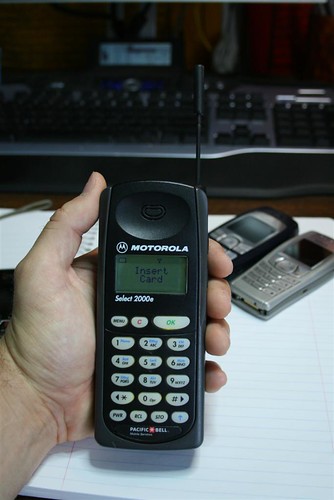For more info, please go to the official web page of ITU.
The Europeans realized this early on, and in 1982 the Conference of European Posts and Telegraphs (CEPT) formed a study group called the Groupe Spécial Mobile (GSM) to study and develop a pan-European public land mobile system. The proposed system had to meet certain criteria:
- Good subjective speech quality
- Low terminal and service cost
- Support for international roaming
- Ability to support handheld terminals
- Support for range of new services and facilities
- Spectral efficiency
ISDN compatibility In 1989, GSM responsibility was transferred to the European Telecommunication Standards Institute (ETSI), and phase I of the GSM specifications were published in 1990. Commercial service was started in mid-1991, and by 1993 there were 36 GSM networks in 22 countries. Although standardized in Europe, GSM is not only a European standard. Over 200 GSM networks (including DCS1800 and PCS1900) are operational in 110 countries around the world. In the beginning of 1994, there were 1.3 million subscribers worldwide, which had grown to more than 55 million by October 1997. With North America making a delayed entry into the GSM field with a derivative of GSM called PCS1900, GSM systems exist on every continent, and the acronym GSM now aptly stands for Global System for Mobile communications.
The developers of GSM chose an unproven (at the time) digital system, as opposed to the then-standard analog cellular systems like AMPS in the United States and TACS in the United Kingdom. They had faith that advancements in compression algorithms and digital signal processors would allow the fulfillment of the original criteria and the continual improvement of the system in terms of quality and cost. The over 8000 pages of GSM recommendations try to allow flexibility and competitive innovation among suppliers, but provide enough standardization to guarantee proper interworking between the components of the system. This is done by providing functional and interface descriptions for each of the functional entities defined in the system.
 |
| One of the oldest mobile phones in display. |
Services provided by GSM
From the beginning, the planners of GSM wanted ISDN compatibility in terms of the services offered and the control signalling used. However, radio transmission limitations, in terms of bandwidth and cost, do not allow the standard ISDN B-channel bit rate of 64 kbps to be practically achieved.
Using the ITU-T definitions, telecommunication services can be divided into bearer services, teleservices, and supplementary services. The most basic teleservice supported by GSM is telephony. As with all other communications, speech is digitally encoded and transmitted through the GSM network as a digital stream. There is also an emergency service, where the nearest emergency-service provider is notified by dialing three digits (similar to 911).
A variety of data services is offered. GSM users can send and receive data, at rates up to 9600 bps, to users on POTS (Plain Old Telephone Service), ISDN, Packet Switched Public Data Networks, and Circuit Switched Public Data Networks using a variety of access methods and protocols, such as X.25 or X.32. Since GSM is a digital network, a modem is not required between the user and GSM network, although an audio modem is required inside the GSM network to interwork with POTS.
Other data services include Group 3 facsimile, as described in ITU-T recommendation T.30, which is supported by use of an appropriate fax adaptor. A unique feature of GSM, not found in older analog systems, is the Short Message Service (SMS). SMS is a bidirectional service for short alphanumeric (up to 160 bytes) messages. Messages are transported in a store-and-forward fashion. For point-to-point SMS, a message can be sent to another subscriber to the service, and an acknowledgement of receipt is provided to the sender. SMS can also be used in a cell-broadcast mode, for sending messages such as traffic updates or news updates. Messages can also be stored in the SIM card for later retrieval.
Supplementary services are provided on top of teleservices or bearer services. In the current (Phase I) specifications, they include several forms of call forward (such as call forwarding when the mobile subscriber is unreachable by the network), and call barring of outgoing or incoming calls, for example when roaming in another country. Many additional supplementary services will be provided in the Phase 2 specifications, such as caller identification, call waiting, multi-party conversations.
No comments:
Post a Comment